Amaranth is a decorative plant, pleasing people with their attractive appearance and useful properties, for more than 8,000 years. America is considered to be the birthplace of culture. The name of this plant comes from the word "amantos" and translates as a "non-pulmonary flower." In addition to the external beauty, Amaranth is aft culture, used as a medicine, as well as in food. In this article you can learn how to grow Amaranth and the peculiarities of the plant's care.
Plant Description
Amaranth is a very beautiful plant that can become a real decoration of the country area or lawn. This is an annual culture that reaches 2-3 m in height, has a meaty stem and leaves of red, purple and green flowers. Amaranth belongs to weed cultures, so it is not afraid of long-term droughts, little susceptible to diseases and pests, but at the same time he loves light and warmth. Amaranth is absolutely non-additive, it grows on any soils, except for wetlands, and with all weather conditions, except for the deserts and the Far North. It feels best at air temperature from 25 to 30 ° C, it calmly transfers light frosts and heat in 45-50 ° C.
In addition to its decorative properties, Amaranth is used in animal husbandry and poultry farming. This plant serves as the most efficient and environmentally friendly food compared to other feed crops. It has 18 of the 20 all existing amino acids. Amarantite is not just a vitamined and nutritious feed, but also replaces some drugs.
In addition, the plant is actively used in human nutrition. Grain and flour from it applied in bakery baking, in conservation and as an additive in vegetable salads. Bread cooked with flour from Amaranth for a long time does not taste. The leaves and inflorescences are used to prepare therapeutic tea capable of removing harmful salts from the body and radionuclides. Also, leaves can be added to fresh salads instead of spinach. And the amarantic oil is considered more useful than even sea buckthorn. It is very widely used in the food industry and in cosmetology.
Amaranth varieties
There are a lot of varieties of this beautiful and useful plants. Get acquainted with the most popular species:
- A variety of decorative "redtar" - its height can reach up to 1.5 m in height. The inflorescence of a dark purple color in the form of "tailings" is hanging almost to the earth itself. Leaves have a rich red color.
- Decorative "Gulliver" variety - a low-speed culture, reaching height from 50 to 70 cm. This variety is unusual due to its appearance - the flowers are formed from the earth itself to the top of the plant, forming a beautiful patch of small flowers of dark purple or almost black. "Gulliver" is very similar to an exotic cactus.
- Decorative grade "Elbrus" - a low-level plant of about 70 cm in height. An unusual 15 cm inflorescences of the pyramidal shape have a white color with a greenish tint.
- "The Argentine" sort - a classic bush amaranth cultivar, reaching a height of 1.5 m has a large number of "tails" violet-purple color.. It is because of this kind of amaranth make decorative bouquets.
- Grade "Belosemyanny" - a very valuable kind of amaranth, which is used to feed animals. Plant reaches two meters in height, has large leaves greyish. Pyramidal inflorescence a panicle are bright red or green.
- Grade "tail" - a classic look amaranth, which is used for the decoration of bouquets. It has inflorescences of various colors.
- Grade "Emerald" - got its name from a beautiful green color. Amaranth growth reaches 70 cm in height.
- Grade "Helios" - type of grain amaranth. Leaves his light green, the "tails" orange. From this variety is produced the largest percentage of amaranth oil.
- Grade "Aztec" - stern view of amaranth. In addition to cattle feed used for the manufacture of amaranth oil and corn are used for baking of bakery products. The height of the culture reaches 1.5 m. It has red-green leaves and red whisk.
- Grade "Sam" - stern view of amaranth. Used for the manufacture of amaranth oil. It has a high protein content. Stalk, tassel and red leaves.
- Grade "Kharkov 1" - the universal grade amaranth (food, feed, grain and medical). It has green leaves and panicles of the same color.
- Grade "Lera" - mostly grain amaranth cultivar is also used for oil production. It has green stem and green leaves with red veins. Whisk always red.
Getting amaranth seeds
In order to grow amaranth, seeds can be bought in any specialized shop. Still, many people prefer to cultivate the culture of his plants. Get amaranth seeds is easy:
- Cut amaranth at the base and fold panicles on a table or any other surface to completely dry for another 2 months. The room in which will dry amaranth, should be dry and well ventilated.
- After 2 months sift whisk using a sieve with very fine mesh.
- Extracted seeds piled on the surface in the same well-ventilated area and leave it for another 7-10 days. Stir the seeds.
- Make sure that the seeds have not reached rodents. To do this, lay around the seeds of elderberry branches.
- Put dried up the seeds in paper envelopes or boxes. Keep them can be 4-5 years.
Sprouting amaranth seed
Sprouting from amaranth seeds for seedlings do not require much effort, but some guidance is still worth considering:
- Begin to germinate the seeds for seedlings can be as early as March.
- Prepare a special soil - humus mix and sterile sand in a ratio of 3/1. Do not forget to warm up the soil to kill pests and various fungi.
- Capacity in which you are planning to grow the seeds should be no lower than the height of 10 cm. It can be pots or wooden boxes.
- The pot must have holes for removing excess moisture and water. If there are no holes, make them yourself. This is mandatory, otherwise the seedlings may rot.
- Place the seeds in moist soil to a depth of 1.5-2 cm. After that, cover with foil boxes and pots.
- Pots and boxes of seeds have to stand in a warm and bright place.
- It is best to moisten the earth with the seeds from the sprinkler. If you do decide to water the soil, do not overdo it, otherwise the seed will rot.
- Provided that the room temperature is 22 ° C, the seeds germinate in 3-4 days. If the air temperature is 16 ° C or below, then wait germs have not earlier than 10 days.
- It is desirable to thin out the seedlings, so they do not grow too thick. Leave only a strong and healthy rostochku.
Swordplay seedlings:
- When will rostochku 3-4 leaflets, each seedling to be transplanted in a separate pot. The diameter of the pot should be at least 12 cm.
- Fill each pot with soil. It will be correct to use the same soil in which the seeds are germinated you.
- Moisten the advance land in which to grow your seedlings, and only then gently remove each sprout.
- Make a well in the ground and landed in his seedlings. Water the plant.
- After the transplant each seedling in a separate pot, Prischepa top of rostochku. This will help to grow strong plant roots.
- Seedlings planted in open ground in early May, when the average temperature is as high as 4 ° C. The soil had already sufficiently warmed up, and there is no danger that the strike frost.
Transplantation of amaranth in the open ground
Choosing a place in the garden
Before transplanting seedlings into open ground, you need to choose a place where the plant will be comfortable. Amaranth is absolutely not picky and take root anywhere. And, nevertheless, there are some points to consider when choosing a site for transplanting seedlings:
- Amaranth loves a lot of sunlight and heat. In such conditions, it will grow much more active, and its inflorescences will have a brighter color.
- Amaranth does not like too wet and swampy soils, and prefers loamy, sandy with good drainage.
- The soil for planting seedlings must be prepared in autumn: to accurately make humus and mineral fertilizers (potassium and phosphorus).
- Amaranth feels well and looks great in the neighborhood with any other plants.
- It is advisable to plant an amaranth in the background of a common flower garden in the garden. It will highly emphasize his unusual beauty.
Preparation of seedlings for transplant
In May, when the average air temperature will reach above 4 ° C, you can start landing seedlings into open ground. Since seedlings all this time was in greenhouse conditions, before transferring it to be prepared - harden and teach to street conditions:
- 7-8 days before the planned transplant, decrease watering seedlings.
- Start rendering a pot with seedlings to the street. It can be a balcony, loggia or garden.
- First days leave seedlings on the street within 2-3 hours. And after 3-4 days it will be possible to give seedlings to spend the night in new conditions.
Disembarking saplings
If you have already hardered seedlings, the soil is completely ready to take seedlings, and there is no threat of frosts, it's time to start planting plants into an open ground:
- Moisten the ground in advance with the seedlings so that you can easily remove the flowers.
- Make grooves in the ground. If you want to plant an amaranth row, then the distance between them should be at least 80 cm, and the distance between the bushes is 40-50 cm.
- Remove seedlings from pots and transfer to the deepening. Amarantite needs to plant a little tilt and shuffle to the first sheet.
- The best time to transplant Amaranth - cloudy weather. If you still decided to transplant seedlings in sunny weather, wait for the evening when the sun would not be so bright.
- After the transplant is well a plants.
How beautiful an amaranth of seeds grow, can be seen in the photo:
Amaranth care features
Amaranth is completely unpretentious in care, it does not need much moisture and any special conditions. But in order for the plant to not dilute and give a good harvest, you must follow the following recommendations:
- Throughout the summer, Amaranth needs feeding organic and mineral fertilizers.
- Although Amaranth and resistant to drought, in a very hot summer, it must be watered regularly, otherwise he will simply stop growing.
- Amaranth may be amazed. To avoid this, for prevention it is necessary to process plants with biological preparations - akarin and phytodeterm.
- As needed, we have and plunge the plants.
- Be sure to tie the Amarant so that his branches do not break under the severity of colors.
- In June, in June, the tops of the plants are laid, then the bushes will be more lush, stalks are stable, and the number of bins on the branches will be more.
- In the fall, you can collect a new crop of seeds and grow seedlings from them for the next landing.
Amaranth Diseases
Some pests and diseases can be dangerous for Amaranta:
- The greatest danger to the plant is a word. She is able to completely destroy the harvest of a young amaranth. Most often, the failure is activated with very rainy and raw weather. To combat this pest, it is necessary to apply special pesticides.
- Another dangerous pest is a weevil. Its larvae settle in the stems and there they multiply, thereby delaying the development and growth of Amaranth. Special pesticides are also applied in the fight against weevils.
So, you have already learned everything about Amaranth, growing it from seeds and pro features of the care of this culture. As you can see, grow an amaranth of seeds absolutely simple. He is completely unpretentious, calmly transfers dry weather. The main thing in the cultivation to adhere to the following recommendations is to create special conditions in the room where the seeds will germinate, in time to moisten them, choose the right place and prepare the soil for transplant. After the seedlings are planted into the ground, it is necessary to periodically glow and dip the amaranth bushes. If you do not forget all these rules, Amaranth will give a good harvest and will delight you with your beauty all season.

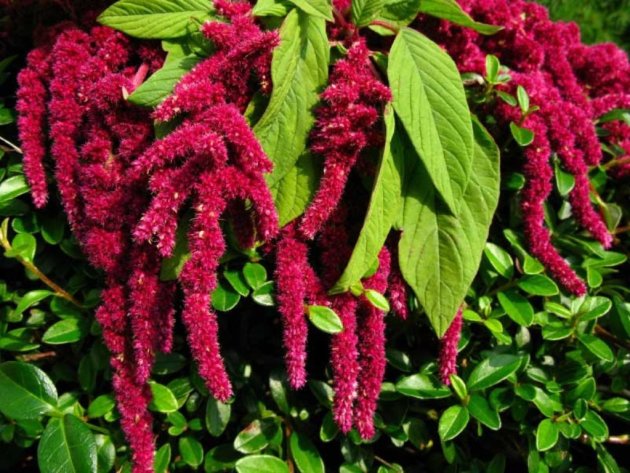
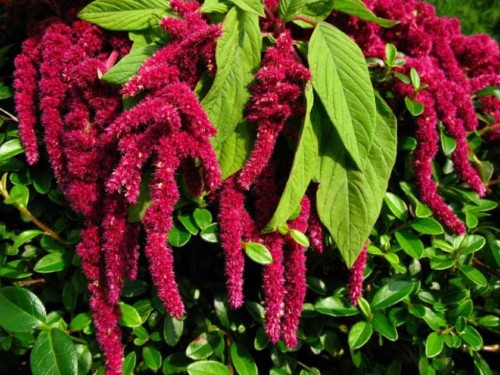
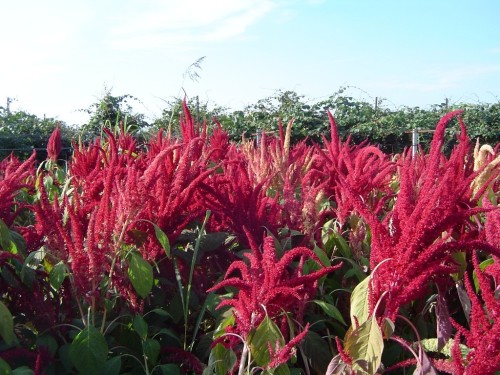
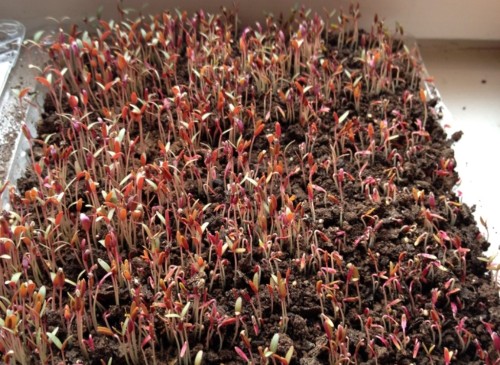
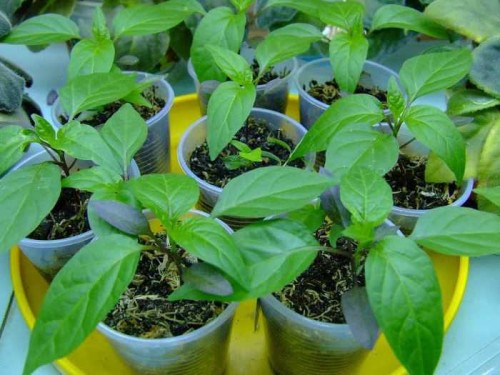
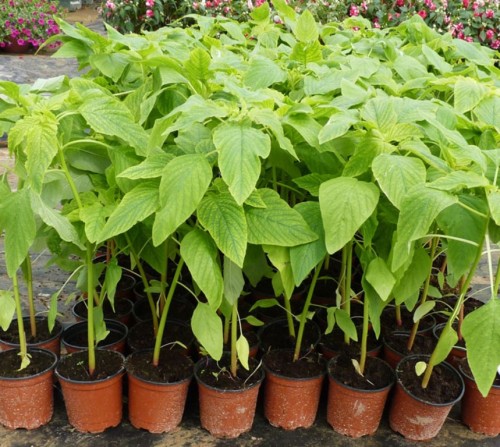
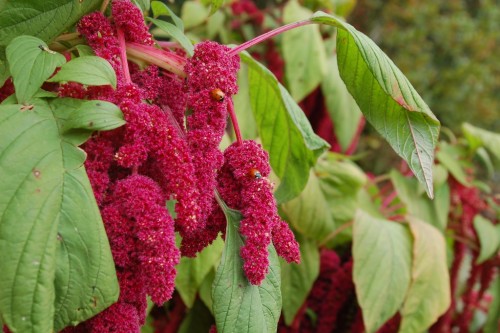

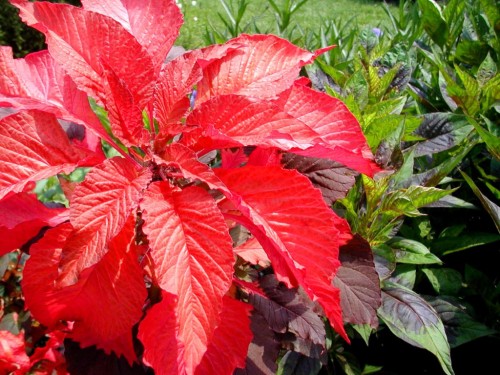
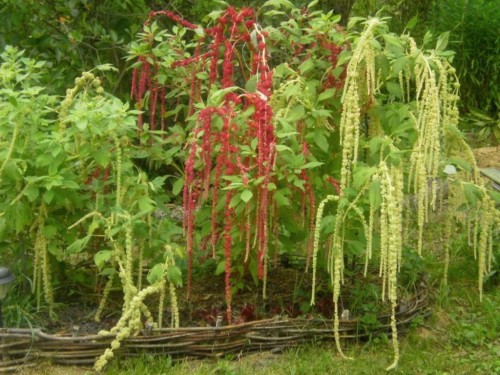












 Start a discussion ...
Start a discussion ...